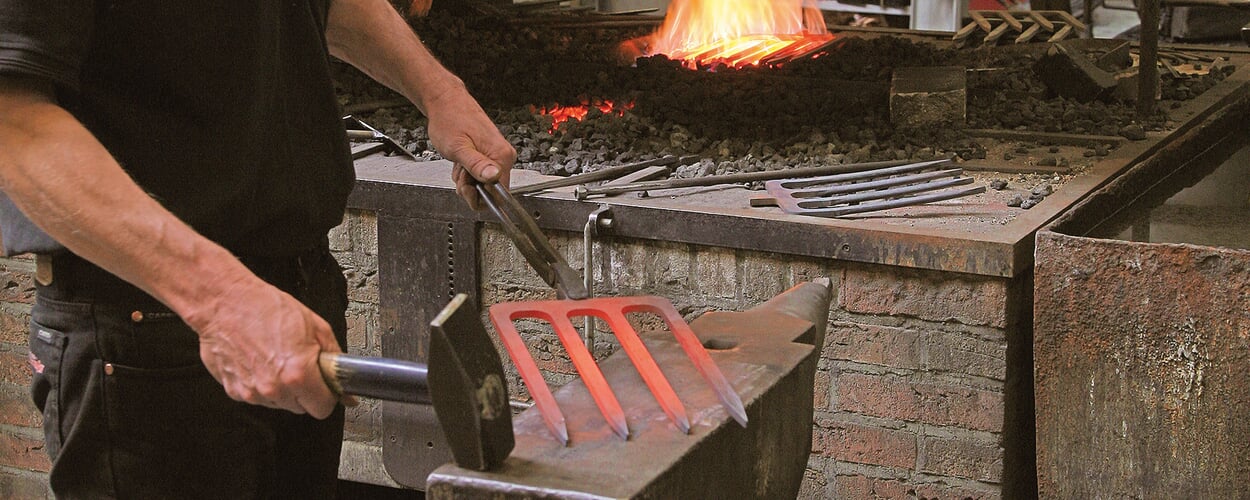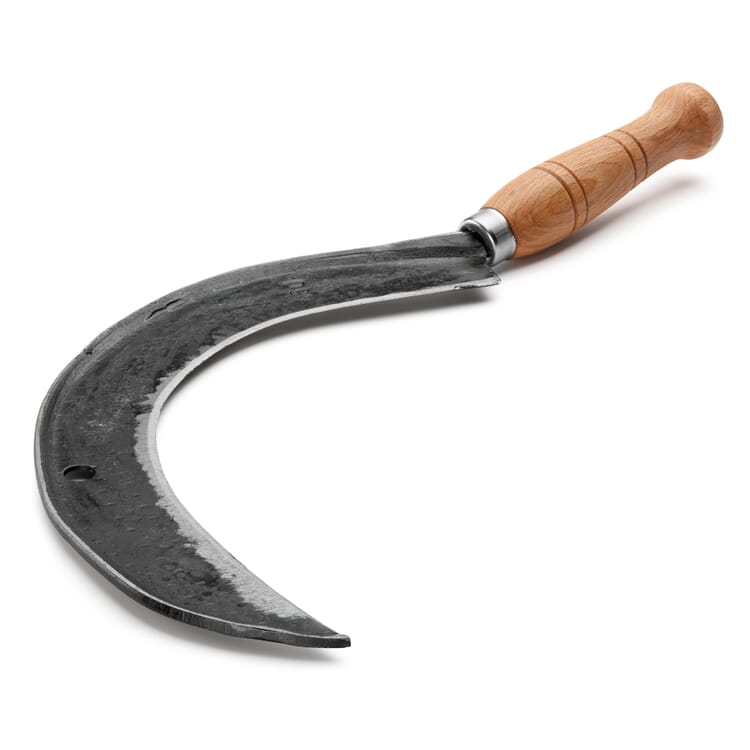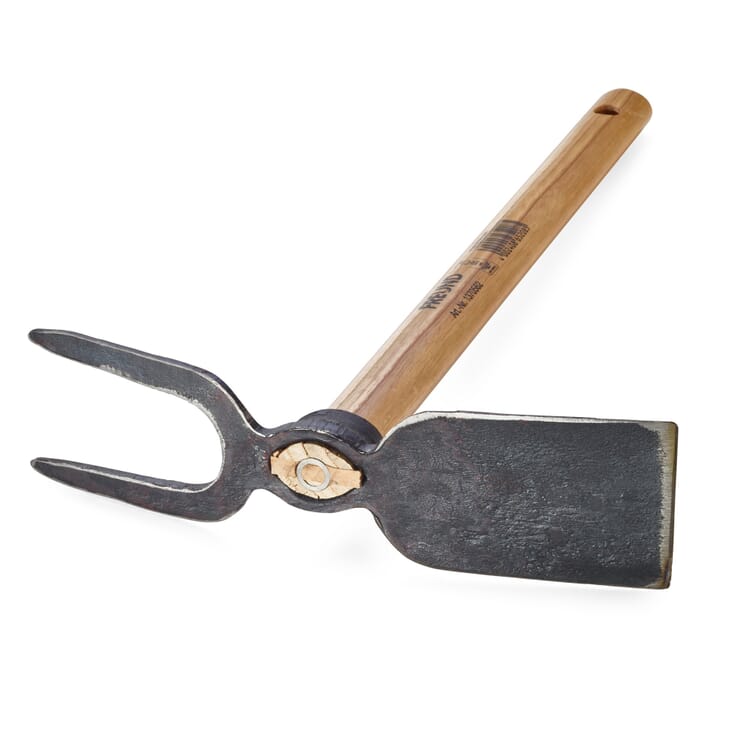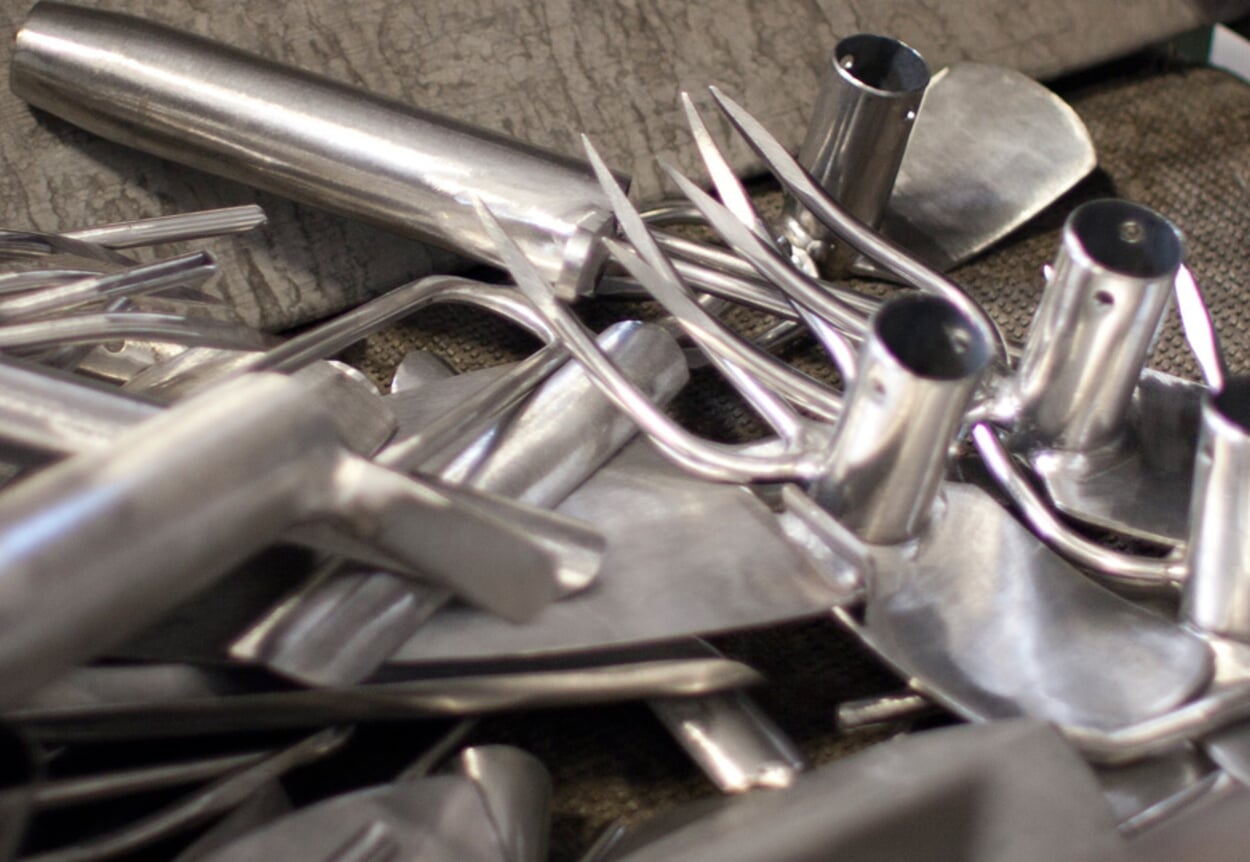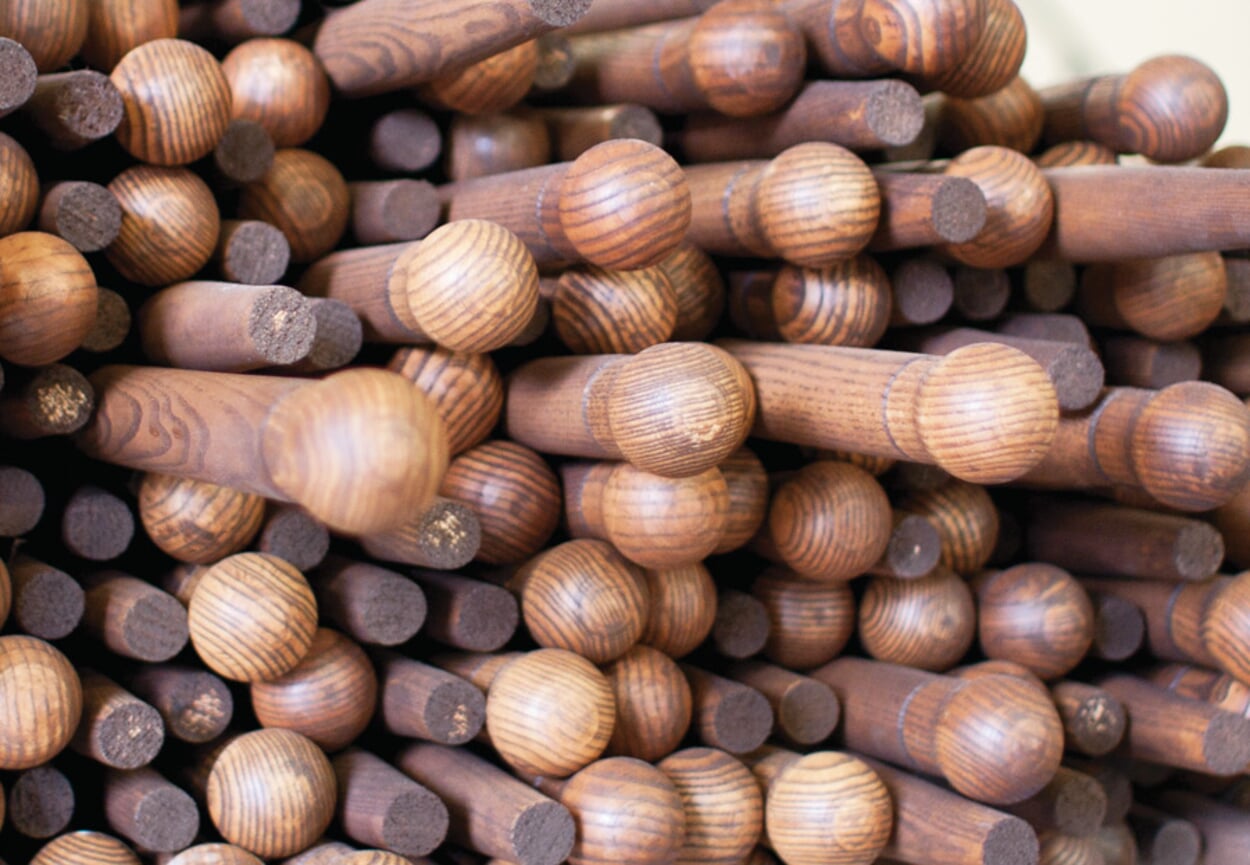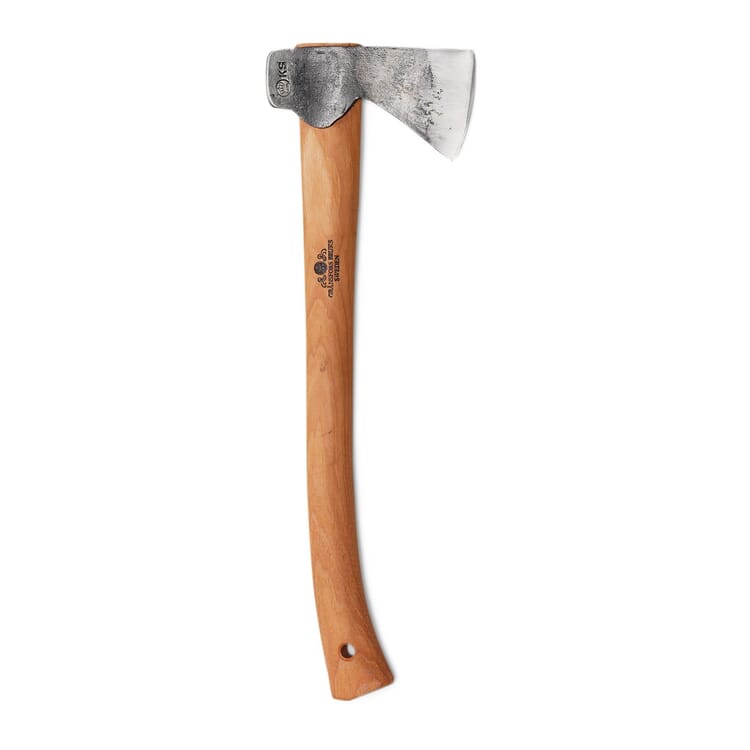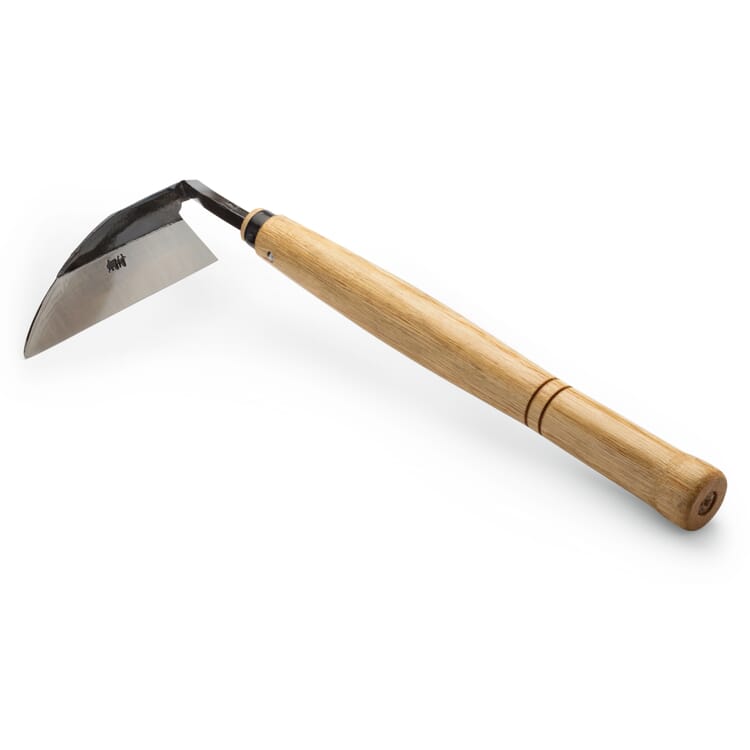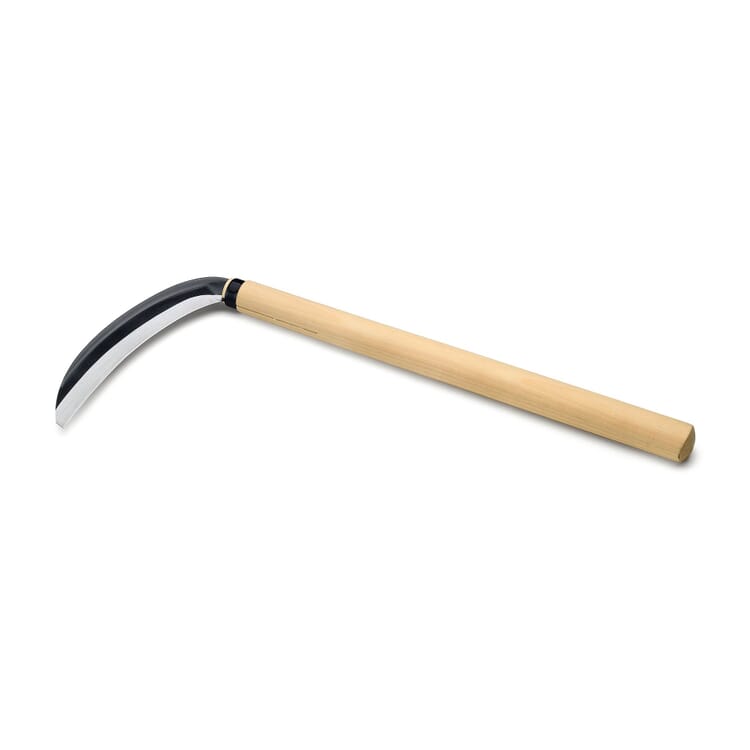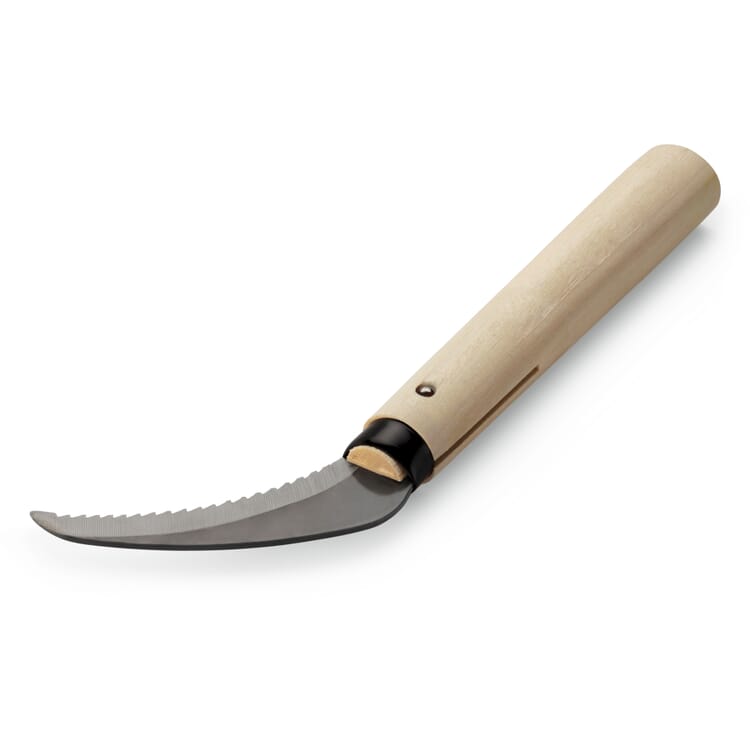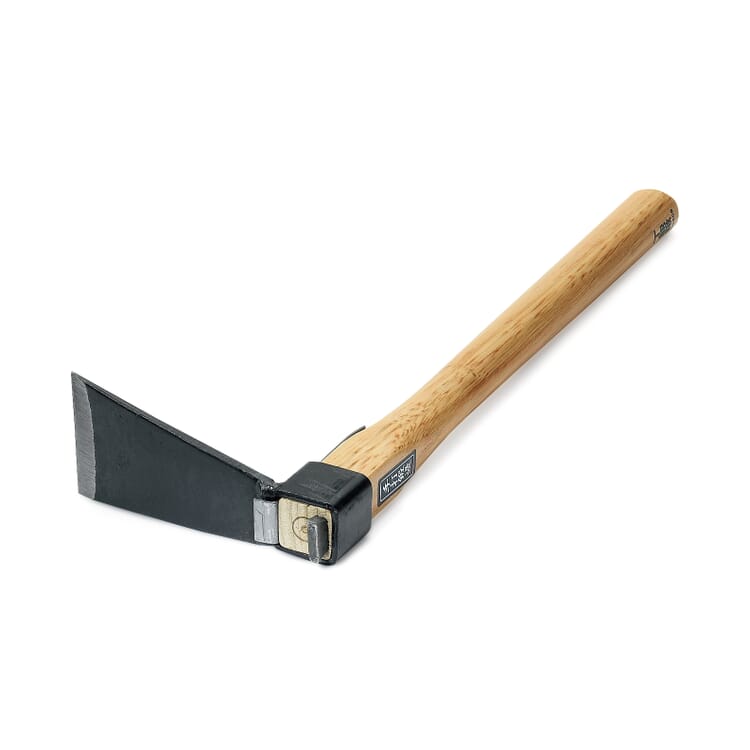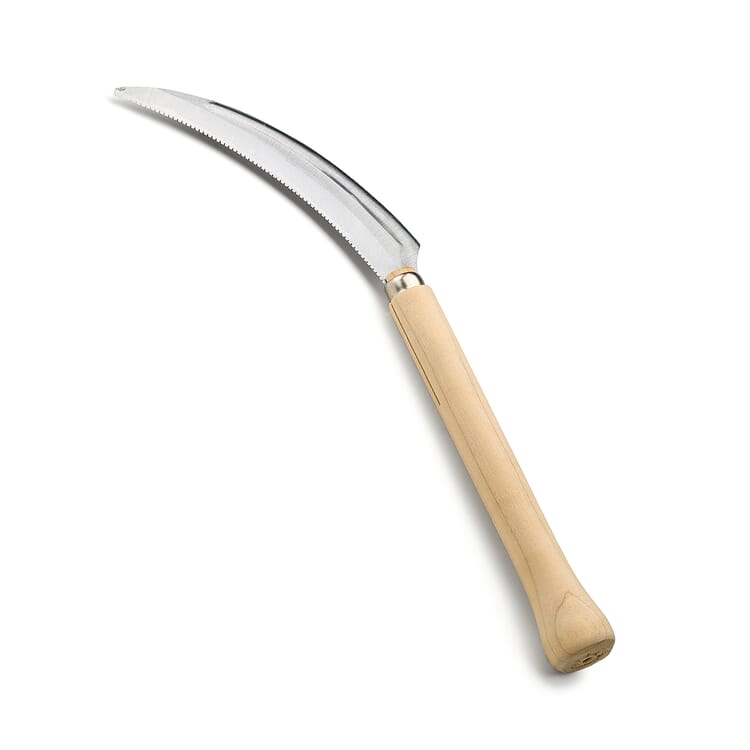Helpful tips
Forged. How to recognize a good tool
In a good tool, the head is usually forged from one piece of metal to suit the function - and not just stamped into the appropriate shape. This is because forging is the only way to deal with the workpiece in all its details and to compress and strengthen the material in those places where this is necessary for functional reasons. Stamped and welded sheet metal, on the other hand, is less resilient, if only because of its uniform thickness, since it cannot provide the necessary reinforcement at the points subject to high stress, and welds can weaken the material.
For the tool head: carbon or stainless steel
For many tools, the use of a steel with a high carbon content is the best choice, because hardened and tempered carbon steel is very strong, at the same time exceedingly elastic and can be worked into the sharpest blades and edges - an invaluable advantage when hoes, weeders and cutting tools are in frequent use. Garden tools made of stainless steel have other advantages: they are rustproof, very easy to clean and therefore practically indestructible. In addition, the functional parts are extremely sturdy - spades and forks made of stainless steel are therefore particularly well suited for working in very heavy, stony soil. Due to the lower flexibility, however, they lack a certain "cooperation" - at least in comparison with tools made of carbon steel.
For handles and grips: suitable woods of ash and hickory
Tool handles made of wood should meet two conditions: Durable, they must be quite flexible to absorb shocks; hard, but not so hard that they break when the tool comes into contact with heavy soil or on stone. For long-handled tools, therefore, ash wood is the best choice because it is tough, yet very elastic. Hickory, the wood of the North American walnut, weighs more than ash, but is equally supple and strong. It is therefore mainly chosen for the handles of axes and hatchets.
Japanese garden tool. Especially light
In Japan, lightweight tools are traditionally preferred - which is why handles and grips there are often made from the particularly light wood of the mock chestnut or bluebell tree and thus carry hardly any weight of their own. In addition to the type of wood, another criterion for good tool handles is that they should grow as flawlessly as possible without knots or other irregularities. In such places, the handle would sooner or later crack or immediately break under load. The course of the annual rings in the wood is equally important. It should be as vertical as possible - especially in the case of long handles - in order to reduce the risk of breakage to a minimum and to ensure the kind of oscillating stability that characterizes a good tool handle.

